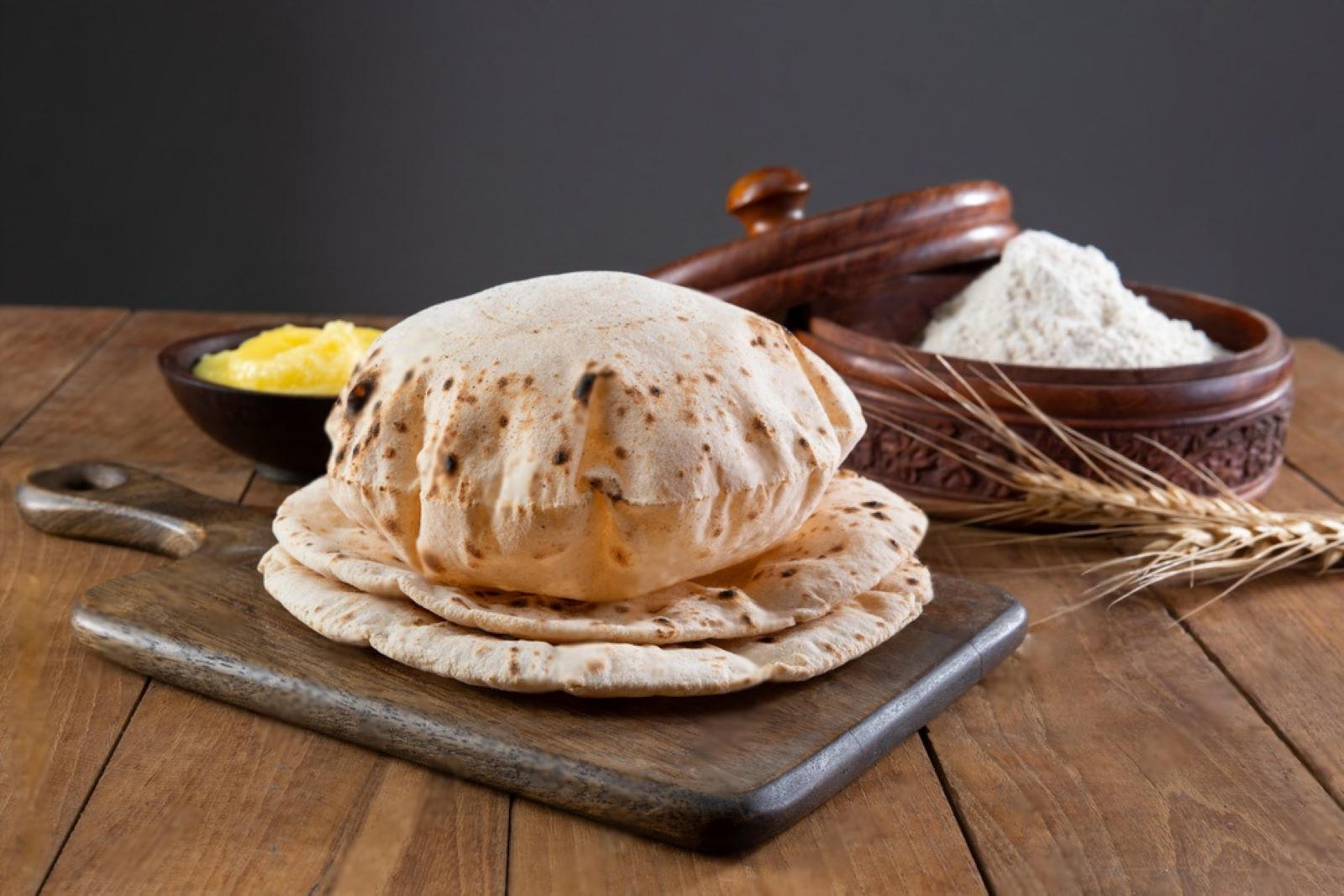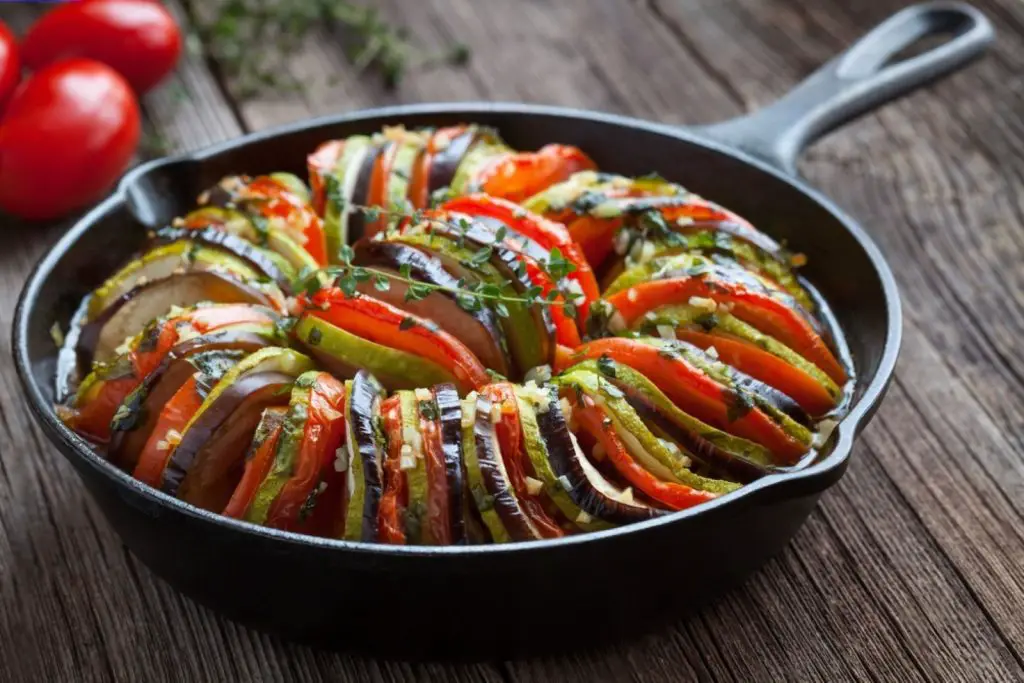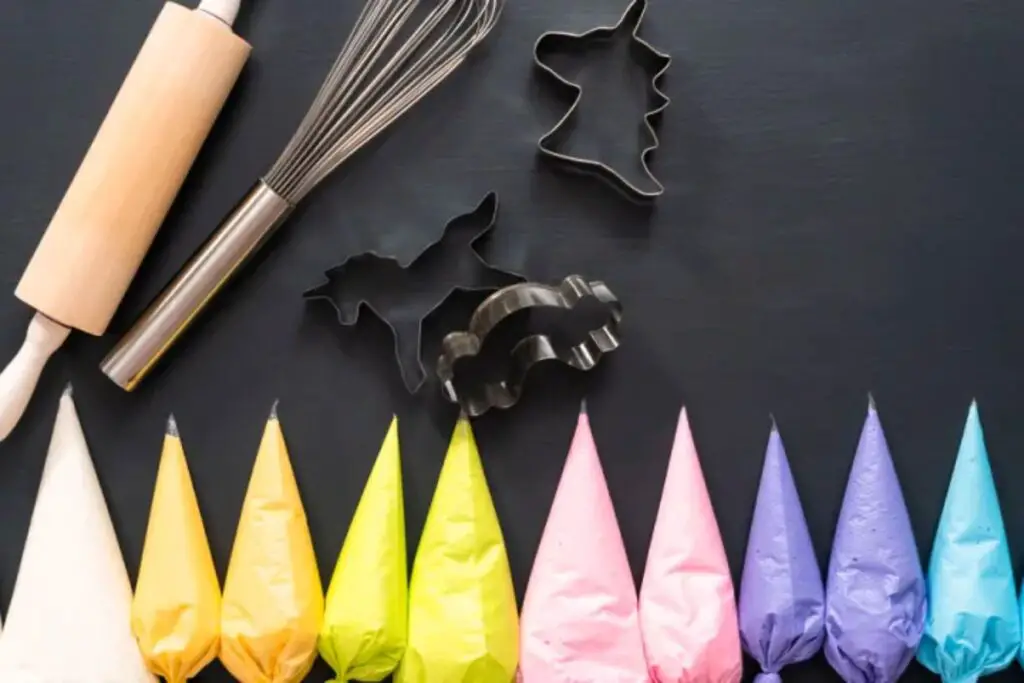
Rotis, a traditional and versatile Indian flatbread, hold a special place in the hearts and kitchens of many households. Made from wheat flour, these soft and unleavened breads are a staple accompaniment to a wide variety of Indian dishes, from curries and stews to grilled meats and vegetables. The process of making rotis involves kneading the dough, rolling it into thin rounds, and cooking them on a hot griddle until they puff up and develop a delightful golden-brown color. Their simplicity and ability to complement a wide range of flavors have made rotis a beloved choice for meals across generations. However, when preparing rotis in larger quantities or for future use, it may be challenging to consume them all before they begin to dry out or lose their softness. Freezing rotis becomes a practical and effective method to preserve their tender texture and authentic taste, ensuring that each flatbread remains soft and ready to accompany your Indian meals with its warm and comforting goodness, even when fresh rotis are not readily available or when you wish to enjoy this beloved flatbread at your convenience. In this guide, we will explore the best practices for freezing rotis, allowing you to savor their delightful taste and elevate your culinary creations with the essence of these freshly made Indian breads, whenever you desire, without the need for a fresh preparation or visit to your local Indian restaurant.
Here are the simple steps to freeze rotis:
Step 1: Prepare the Fresh Rotis
The first step in freezing rotis is to prepare the fresh rotis that you want to preserve for later use. There are two scenarios for this step:
- Making fresh rotis:
If you’re planning to freeze rotis that you’ve just made, ensure they are fully cooked and slightly cooled before proceeding. Rotis can be made from various types of flours, such as wheat, millet, or chickpea flour, depending on your preference and dietary requirements.
To make fresh rotis, follow these general steps:
- Measure the desired amount of flour and add water gradually to form a soft, pliable dough.
- Knead the dough thoroughly until it becomes smooth and elastic.
- Divide the dough into small balls, about the size of a golf ball.
- Roll out each ball into a thin, round shape using a rolling pin on a floured surface.
- Cook the roti on a hot griddle or tawa until both sides are lightly browned and cooked through.
- Obtaining leftover rotis:
If you have leftover rotis from a previous meal that you want to freeze, ensure they have cooled down to room temperature. Leftover rotis are perfectly suitable for freezing as long as they are still in good condition and haven’t been left out at room temperature for an extended period.
This freezing method is versatile and can be used with freshly made rotis or those that have been refrigerated after a meal. Freezing rotis allows you to keep them for an extended period, ensuring you always have a quick and convenient option for meals even when you don’t have the time or resources to make them from scratch. By following the subsequent steps in the freezing process, you’ll be able to maintain the softness and flavor of the rotis, making them as enjoyable as freshly made ones when you decide to use them.
Step 2: Allow the Rotis to Cool
After preparing the fresh rotis or retrieving leftover ones for freezing, it is crucial to let them cool completely before proceeding with the freezing process. Allowing the rotis to cool is an essential step to maintain their quality and prevent potential issues during freezing and storage.
Here’s why cooling the rotis is important:
- Texture preservation: Rotis are soft and pliable when freshly cooked, and their texture is influenced by residual heat. Placing hot rotis directly into the freezer can lead to condensation forming inside the packaging due to the temperature difference. This moisture can cause the rotis to become soggy and lose their desired texture once frozen and thawed later. By cooling them to room temperature, you minimize the risk of excess moisture during freezing.
- Preventing sticking: When rotis are hot, their surface may still have some steam, which can lead to them sticking together if stacked before cooling down. Sticking rotis can be frustrating to separate, and they may tear or lose their shape during the process, resulting in a less appealing end product. Cooling the rotis individually allows them to dry slightly and reduces the likelihood of sticking.
- Food safety: Placing hot food directly into the freezer can raise the temperature inside the freezer temporarily. This increase in temperature can potentially impact the safety of other frozen items in the freezer, especially if they are perishable. Cooling the rotis before freezing helps maintain the stable temperature of the freezer, ensuring the safety and quality of all frozen items.
Once the rotis have completely cooled down, you can proceed with the next steps of the freezing process, such as stacking them with parchment paper, wrapping them securely, and placing them in a freezer-safe bag or container. By following this methodical approach to freezing rotis, you ensure that they retain their texture, taste, and overall quality, allowing you to enjoy delicious and fresh-tasting rotis whenever you’re ready to use them.
Step 3: Stack the Rotis with Parchment Paper
Stacking the rotis with parchment paper is an essential step in the freezing process to prevent them from sticking together. As rotis can be quite delicate and soft, they have a tendency to adhere to one another when frozen without any barrier. By using parchment paper, you create a protective layer that ensures the rotis remain separate and intact throughout their time in the freezer. Here’s why this step is crucial:
- Prevent sticking: The primary purpose of using parchment paper between each roti is to prevent them from sticking together during freezing. When rotis freeze and thaw, they can release moisture, and without a barrier, this moisture can cause adjacent rotis to adhere. Sticking rotis can be challenging to separate without tearing, leading to a loss of texture and aesthetics.
- Easy separation: Placing parchment paper between the rotis makes it effortless to remove just one or a few rotis from the stack when you want to use them. Without the paper, you might have to thaw the entire stack to access one roti, which can be inconvenient and wasteful if you don’t plan to use all of them at once.
- Preserving individual quality: With parchment paper separating the rotis, there is minimal contact between them, preserving their individual quality and integrity. This ensures that each roti retains its distinct taste, softness, and texture when thawed and cooked.
To stack the rotis with parchment paper, follow these steps:
- Take a small piece of parchment paper, roughly the same size as the roti.
- Place one roti on a clean, dry surface.
- Put the parchment paper on top of the roti.
- Add another roti on top of the parchment paper.
- Continue this process until all the rotis are stacked, with a piece of parchment paper between each one.
Step 4: Wrap the Rotis Securely
After stacking the rotis with parchment paper to prevent sticking, the next crucial step is to wrap the stack of rotis securely with either plastic wrap or aluminum foil. This wrapping process ensures that the rotis are adequately protected from freezer burn and helps retain their moisture and freshness during storage in the freezer. Here’s why this step is important:
- Freezer burn prevention: Freezer burn occurs when food is exposed to air and loses moisture during freezing. It can negatively affect the texture, taste, and overall quality of the rotis. Wrapping the rotis with plastic wrap or aluminum foil creates a protective barrier that minimizes air exposure, reducing the risk of freezer burn.
- Moisture retention: Rotis have a relatively low moisture content, and freezing can further dehydrate them. By wrapping the stack of rotis securely, you help retain the natural moisture within the bread, which is crucial for maintaining their softness and preventing them from becoming dry and crumbly after thawing.
- Preservation of taste and texture: The secure wrapping keeps the rotis well-contained and prevents any external odors or flavors from permeating them while in the freezer. This helps preserve the authentic taste and texture of the rotis, ensuring they taste just as delicious when thawed and heated for consumption.
To wrap the stack of rotis securely, follow these steps:
- After placing parchment paper between each roti and creating the stack, hold the rotis together gently to ensure they stay in place.
- Use plastic wrap or aluminum foil to cover the entire stack of rotis from top to bottom. Make sure the wrapping is tight but not so tight that it crushes the rotis.
- Seal the ends of the plastic wrap or fold the edges of the aluminum foil to ensure no air can enter.
- Double-check that the entire stack of rotis is well covered and there are no exposed parts.
- Once the rotis are securely wrapped, they are ready for the next step of the freezing process, which involves placing them in a freezer-safe bag or container for long-term storage.
Step 5: Place in a Freezer-Safe Bag
Once you have securely wrapped the stack of rotis with plastic wrap or aluminum foil, the next important step is to transfer them into a freezer-safe bag or airtight container. This step is crucial for maintaining the quality and freshness of the rotis during their time in the freezer. Here’s why placing the wrapped rotis in a freezer-safe bag is important:
- Extra protection against freezer burn: Freezer-safe bags and airtight containers provide an additional layer of protection against freezer burn. These containers are specifically designed to keep air out and moisture in, which is essential for preventing the rotis from drying out and developing freezer burn. Air exposure is one of the main culprits behind freezer burn, and using a proper container helps minimize this risk.
- Preservation of taste and texture: By using a freezer-safe bag or airtight container, you create a controlled environment for the rotis, preserving their taste, softness, and texture. The lack of exposure to air and other freezer odors ensures that the rotis remain true to their original flavor profile and do not absorb any unwanted smells.
- Organized storage: Placing the wrapped rotis in a bag or container helps keep the freezer tidy and organized. It prevents the rotis from getting scattered or lost among other frozen items, making it easier for you to locate and retrieve them when needed.
To place the wrapped rotis in a freezer-safe bag or container, follow these steps:
- Carefully transfer the securely wrapped stack of rotis into a freezer-safe ziplock bag or an airtight container.
- If using a ziplock bag, gently press down on the bag to remove any excess air trapped inside. This step is essential for reducing the chance of freezer burn, as excess air can lead to moisture loss.
- Seal the bag or container tightly to create a secure and airtight seal.
- If using a ziplock bag, it’s a good idea to double-bag the rotis for added protection. Place the sealed bag inside another ziplock bag and repeat the process of squeezing out excess air and sealing tightly.
Step 6: Label the package
Labeling the package with the date of freezing is a crucial step in the process of freezing rotis. It helps you keep track of when the rotis were placed in the freezer, allowing you to prioritize their consumption and ensure they are used within a reasonable timeframe. Here’s why labeling the package is important:
- Tracking freezer storage time: Freezing rotis extends their shelf life, but it’s essential to keep track of how long they’ve been in the freezer. By labeling the package with the date of freezing, you have a reference point for when the rotis were stored. This allows you to know exactly how long they have been frozen, which is important for maintaining their quality and taste.
- Ensuring freshness and quality: Like any frozen food, rotis have an optimal storage time before their quality begins to degrade. While rotis can remain safe to eat for an extended period in the freezer, they are best enjoyed when consumed within a certain timeframe. Labeling the package helps you monitor this timeline and prioritize using the rotis before they might start to lose their freshness or taste.
- Organized freezer inventory: Labeling the package creates an organized system in your freezer. It prevents confusion and makes it easier to identify the contents of the package without having to open it. When you have multiple items in the freezer, a labeled package allows you to quickly locate the rotis and plan your meals accordingly.
To label the package with the date of freezing, follow these steps:
- Use a marker or an adhesive label to write the date of freezing directly on the freezer-safe bag or container that holds the rotis.
- Write the date in a clear and visible manner to avoid any confusion later on.
- If you have multiple packages of frozen rotis, consider numbering or naming them to further aid in organization and tracking.
- If using a reusable container, you can use a sticker label or masking tape to write the date and easily remove it for future use.
With the package labeled, you can confidently store the rotis in the freezer, knowing that you have a clear record of when they were frozen. This information helps you plan your meals effectively, ensuring that you consume the rotis while they are still at their peak quality. By following this step, you can fully enjoy the convenience and deliciousness of frozen rotis whenever you’re ready to indulge in a tasty Indian flatbread meal.
Step 7: Store in the Freezer
After properly labeling the package with the date of freezing, the next crucial step is to store the wrapped and labeled rotis in the freezer. Proper storage ensures that the rotis remain in optimal condition throughout their time in the freezer. Here’s why this step is important:
- Maintaining quality and taste: Storing the rotis in the freezer at the recommended temperature of below 0°F (-18°C) helps maintain their quality and taste. At this temperature, the rotis are effectively preserved, preventing the growth of bacteria and minimizing any potential degradation in texture and flavor.
- Avoiding damage: Placing the package in a spot where the rotis won’t get crushed or stacked under heavy items is essential for preventing damage to the bread. Rotis are delicate, and excessive pressure can cause them to break or lose their shape, leading to an unsatisfactory end result when thawed.
To store the rotis in the freezer properly, follow these steps:
- Choose a spot: Select a spot in the freezer that provides adequate space for the package of rotis and ensures they won’t be disturbed or crushed by other items. Consider placing them on a flat surface or in a designated section of the freezer to keep them organized.
- Keep them flat: Lay the package flat in the chosen spot to maintain the shape and integrity of the rotis. Avoid stacking other items on top of the package, as this could lead to damage.
- Quick freezing: Ensure the freezer is set to the recommended temperature of below 0°F (-18°C). A lower temperature allows for quick freezing, which helps preserve the quality of the rotis and minimizes the formation of large ice crystals.
- Avoiding temperature fluctuations: Be mindful of not frequently opening and closing the freezer door, as this can cause temperature fluctuations inside the freezer, potentially impacting the quality of the frozen rotis.
How long can rotis last in the freezer?
Rotis can last in the freezer for up to 6 months if stored properly in airtight containers or freezer-safe bags. After this period, the quality may gradually decline, though they will remain safe to eat for a longer time. It’s best to consume frozen rotis within the first 6 months for optimal taste and texture.
Step 8: Thaw the Frozen Rotis
Thawing the frozen rotis properly is essential to ensure they retain their softness and taste when ready to be consumed. There are two primary methods to thaw frozen rotis: at room temperature and using direct heat. Here’s why this step is important and the recommended methods for thawing frozen rotis:
- Preserve texture and taste: Proper thawing helps preserve the original texture and taste of the rotis. If the rotis are thawed too quickly or at too high a temperature, they may become soggy or lose their softness, affecting the overall dining experience.
- Prevent tearing: Thawing rotis slowly and gently reduces the risk of tearing or damaging them during the process. Frozen rotis can be delicate, and abrupt thawing can result in breakage, making them challenging to use.
Method 1: Thawing at room temperature
- Take the package of frozen rotis out of the freezer and remove any extra packaging, such as the outer ziplock bag or container.
- Place the stack of rotis on a clean plate or a flat surface at room temperature.
- Allow the rotis to thaw naturally. This process may take anywhere from 30 minutes to an hour, depending on the thickness of the rotis and the ambient temperature.
- As the rotis thaw, they will become more pliable and soft, ready for use.
Method 2: Reheating on a stovetop or in a microwave
- If you need to thaw the rotis quickly or prefer them warm, you can use direct heat methods.
- On a stovetop: Heat a non-stick pan or tawa over medium heat. Place the frozen rotis on the hot surface and cook them for a minute or two on each side until they are heated through and soft.
- in a microwave: If you prefer a more rapid thawing method, you can use a microwave. Wrap the frozen rotis in a damp paper towel and microwave them on a microwave-safe plate for 30 seconds to a minute, checking for desired warmth and softness.
By properly thawing the frozen rotis, whether at room temperature or through gentle heating methods, you can ensure they are as delicious and enjoyable as when they were freshly made. Thawed rotis are ready to be served with your favorite Indian dishes or used as wraps for a quick and tasty meal.
Other related questions
Can you refreeze rotis?
Yes, you can refreeze rotis, but it’s generally not recommended as it may impact their quality. Each time rotis are thawed and refrozen, their texture and taste may degrade further, leading to potential loss of softness and flavor. To maintain their best quality, it’s advisable to freeze rotis only once after they are freshly made or obtained and to consume them within the recommended storage period.
How do I know if the rotis has gone bad after being frozen?
To determine if frozen rotis have gone bad, look for signs of freezer burn, discoloration, or off-putting odors. Freezer burn appears as white or grayish patches on the surface, indicating dehydration. Discoloration, mold growth, or a sour smell are indications of spoilage and should prompt discarding. Always use your best judgment, and if in doubt, it’s safer to discard the rotis to avoid potential foodborne illnesses.
Can you freeze rotis made with different flours (e.g., whole wheat, multigrain)?
Yes, you can freeze rotis made with different flours, such as whole wheat or multigrain. The freezing process works well for various types of rotis and helps preserve their freshness for later consumption. After preparing the rotis, allow them to cool, stack them with parchment or wax paper in between, and store them in airtight containers or freezer bags for up to 2-3 months in the freezer.
Can I freeze rotis that have been brushed with ghee or butter?
Yes, you can freeze rotis that have been brushed with ghee or butter. However, it’s essential to consider that the texture of the ghee or butter may change slightly upon freezing and thawing. To freeze, allow the ghee or butter-brushed rotis to cool completely, stack them with parchment paper in between, and store them in airtight containers or freezer bags.
Can you freeze rotis with various seasoning or spice blends?
Yes, you can freeze rotis with various seasoning or spice blends. However, it’s essential to consider that some spices might lose their potency over time in the freezer. To freeze, let the seasoned rotis cool, stack them with parchment paper in between, and store them in airtight containers or freezer bags for up to 2-3 months in the freezer to maintain their flavor.
Can you freeze rotis that have been partially cooked on a tawa or griddle?
Yes, you can freeze rotis that have been partially cooked on a tawa or griddle. Partially cooking the rotis before freezing helps retain their softness and makes them more pliable when reheating. Once partially cooked, allow the rotis to cool, stack them with parchment paper in between, and store them in airtight containers or freezer bags for up to 2-3 months in the freezer.








